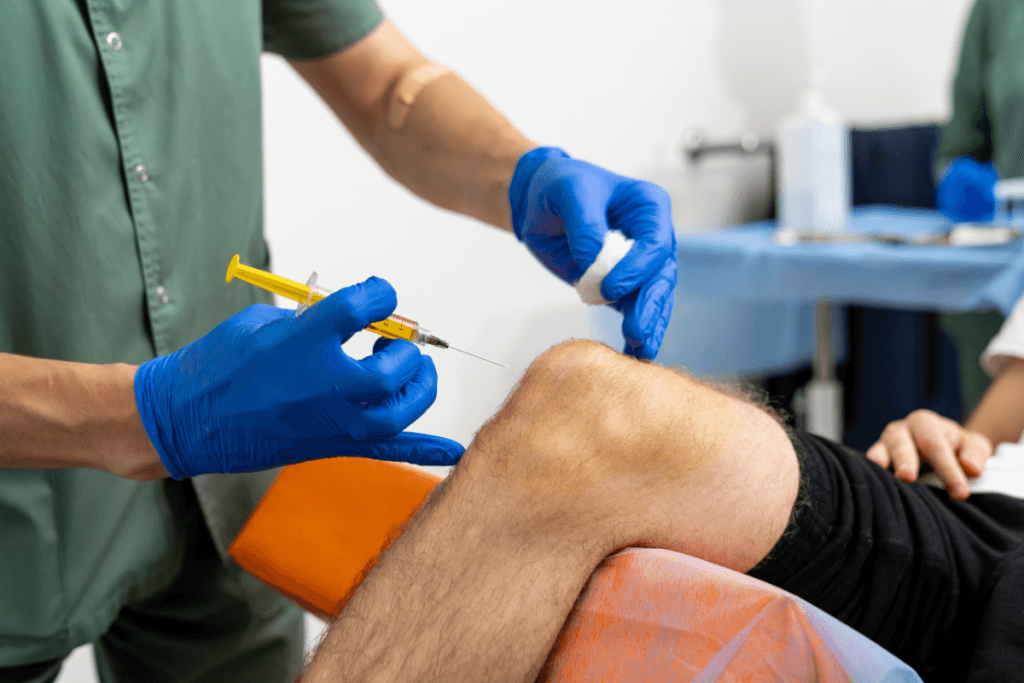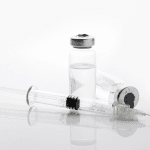For patients with osteoarthritis and chronic joint pain, finding long-term relief is a crucial concern. When oral medications and physical therapy are insufficient, injectable treatments like Synvisc-One and Durolane provide an effective alternative for pain management. These hyaluronic acid (HA) injections aim to improve joint lubrication and reduce pain by mimicking the natural synovial fluid within the joints.
For medical practitioners, understanding the nuances between Synvisc-One vs. Durolane is critical when advising patients on the most suitable treatment for joint pain relief, particularly in the knee. This article compares these two popular injectable treatments and gives insights into their effectiveness, side effects, and recovery considerations.
Understanding Synvisc-One: What It Offers for Joint Pain Relief
Synvisc-One is a single-injection treatment used for managing osteoarthritis (OA) pain, particularly in the knee. It contains hylan G-F 20, a derivative of hyaluronic acid, which supplements the synovial fluid in the joint. Synvisc-One aims to provide better lubrication and shock absorption in the knee, reducing pain and improving mobility.
- Synvisc-One Pros and Cons: One significant advantage of Synvisc-One is the convenience of a single-dose injection, which can provide up to six months of pain relief. However, some patients may experience temporary pain, swelling, or fluid buildup in the knee post-injection. Additionally, while Synvisc-One is effective for many patients, it may not work for everyone, especially those with severe joint degeneration.
- Is Synvisc-One Covered by Insurance?: Most insurance plans, including Medicare, cover Synvisc-One injections if necessary, although pre-authorization may be required.
- Synvisc-One Generic Name: The generic term for Synvisc-One is hylan G-F 20, a chemically modified form of hyaluronic acid.
Exploring Durolane: A Powerful Option for Knee Pain
Durolane is another HA-based injection used to manage pain from osteoarthritis, primarily in the knee and other joints such as the hip. Unlike Synvisc-One, which uses hylan G-F 20, Durolane contains non-animal stabilized hyaluronic acid (NASHA). This technology improves the joint’s lubrication for longer-lasting pain relief.
- Durolane Knee Injection: The injection procedure is typically quick and performed in an outpatient setting. Patients often experience pain relief within a few days to weeks after the injection, lasting up to six months.
- Durolane Injection Success Rate: Clinical studies show that Durolane provides effective pain relief for a significant proportion of patients with osteoarthritis. Its success rate is comparable to other HA injections like Synvisc-One, making it a popular choice for patients seeking non-surgical interventions.
- Is Durolane a Steroid?: No, Durolane is not a steroid. It is a hyaluronic acid-based product that improves the natural lubrication in the joint, unlike steroids that reduce inflammation by modulating the immune response.
Synvisc-One vs. Durolane: Key Differences
When considering Synvisc-One vs. Durolane, there are several factors medical practitioners must evaluate to make the best recommendation for their patients:
- Active Ingredient: Synvisc-One uses hylan G-F 20, while Durolane uses NASHA. Both work to improve joint lubrication, but the molecular structure of the hyaluronic acid differs slightly, which may affect how the body metabolizes the injection.
- Injection Frequency: Synvisc-One is administered as a single injection, while Durolane is a one-time treatment. Both options provide similar durations of pain relief, generally lasting around six months.
- Side Effects: Patients receiving either Synvisc-One or Durolane may experience mild side effects, including temporary pain, swelling, or warmth around the injection site. Some patients report knee pain worsening after Durolane injection initially, but this typically subsides with time.
- Patient Reviews: Durolane knee injection reviews often highlight its fast-acting relief and long-lasting effects. Some patients report an initial worsening of knee pain after Durolane injection, which usually resolves within a week. Meanwhile, Synvisc-One reviews also reflect positive outcomes, with many patients appreciating the convenience of a single injection.
Recovery and Post-Injection Considerations
Post-injection recovery is critical to the overall success of HA injections like Synvisc-One and Durolane. Most patients experience mild discomfort at the injection site for a few days, but this typically resolves with rest and over-the-counter pain medications.
- Recovery After Durolane Injection: Patients should avoid strenuous activities, such as heavy lifting or running, for at least 48 hours after the injection to ensure optimal healing and pain relief. Ice packs and gentle movement may help alleviate any discomfort. Most patients can return to their regular activities within a few days, although it may take up to two weeks to experience the full benefits of the treatment.
Conclusion
When comparing Synvisc-One vs. Durolane, both treatments offer valuable options for patients with osteoarthritis seeking non-surgical pain relief. Each has unique properties, from their active ingredients to side effect profiles, but both provide long-lasting relief for patients with joint pain. Medical practitioners should consider individual patient needs, including the severity of osteoarthritis, budget, and lifestyle when recommending the most appropriate treatment option.
Frequently Asked Questions (FAQs)
What is the difference between Synvisc-One and Durolane?
Synvisc-One and Durolane are hyaluronic acid injections that relieve osteoarthritis-related joint pain, particularly in the knee. While Synvisc-One uses hylan G-F 20, Durolane contains NASHA. Both provide similar durations of pain relief and require a single injection.
Does Insurance cover synvisc-One?
Yes, most insurance companies, including Medicare, cover Synvisc-One injections if they are considered medically necessary for managing osteoarthritis pain. Pre-authorization may be required depending on the plan.
How much does a Synvisc-One injection cost?
The average Synvisc-One injection cost is between $800 and $1,000 per treatment, though this can vary based on location, insurance coverage, and healthcare provider fees.
Can knee pain get worse after a Durolane injection?
Some patients may experience an initial worsening of knee pain after Durolane injection. This is typically a temporary response; most patients see significant improvements within one to two weeks after the injection.
What is the success rate of Durolane injections?
Durolane injection success rate is high, with many patients reporting significant improvements in joint pain and mobility for up to six months. Clinical studies show that it provides effective pain relief similar to other hyaluronic acid injections like Synvisc-One.







